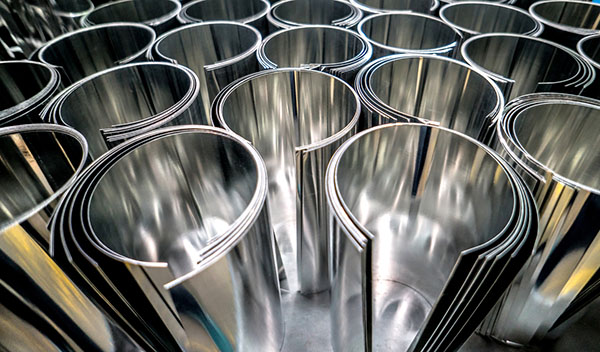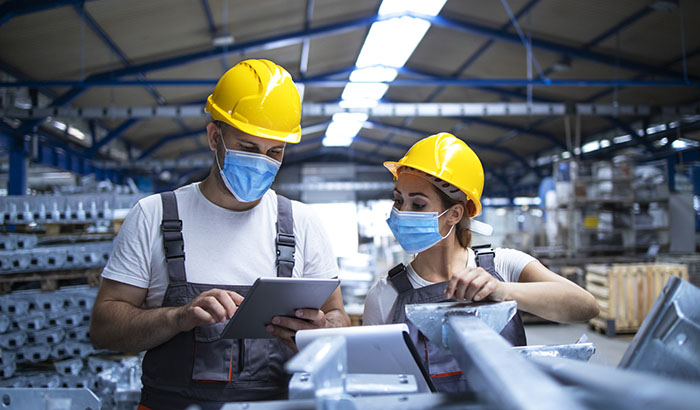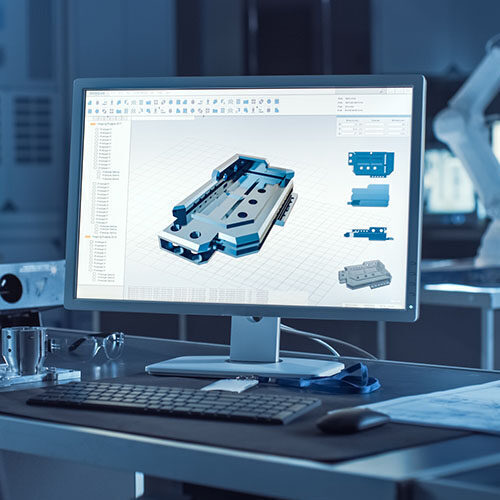
5 Manufacturing Industry Trends to Watch for in 2021
We hope that 2021 will be an easier year to predict than 2020. But, until things start to return to normal hopefully sometime by the middle of this year, the unpredictability of the COVID-19 pandemic is still with us — and a reality that manufacturers must continue to deal with.
We have had our ear to the ground, and the following are the top 5 industry trends we think manufacturers should watch for in 2021.
1. Reshoring and Near Sourcing
Over the past decade, there has been a slow but steady shift towards reshoring manufacturing jobs — which has only been sped up by the COVID-19 pandemic. An estimated 749,000 manufacturing jobs were brought back to the United States between 2010 and 2018, and it is expected more will come in the next few years.
Pressures from global tariffs and trade wars were the major push behind this trend pre-2020, but the unprecedented disruptions to supply chains brought by the pandemic have only shown just how much the United States and Canada rely on foreign countries for their manufactured goods and has added a degree of urgency to beefing up manufacturing in North America.
Just as ‘farm to table’ has created a greater focus on local production in the agricultural industry over the past decade, manufacturers can expect to see a similar shift to local production and sourcing. In the future, manufacturers will want to build where they sell for several reasons, including faster time to market, lower working capital, advantageous government policies, and increased resiliency against future disruptions.
COVID-19 has also prompted manufacturers to reevaluate their supply chain sourcing.
The significant disruptions to global supply chains caused by the pandemic have made it challenging for manufacturers who source from other countries to get a hold of needed goods and materials.
This has prompted many manufacturers to diversify sourcing and create more robust supply chains by adopting a ‘China, Plus One’ strategy — continuing to rely on China for materials, but also sourcing from other countries to create broader and more resilient supply chains, and near-sourcing — sourcing raw materials from domestic suppliers.

2. (Even) Smarter Production Floors
Shop floor automation was a big trend in 2020 as manufacturers looked to mitigate the pressures put on them from the pandemic — and is one that will continue to be big in 2021.
Higher levels of automation were needed by manufacturers to circumvent pandemic-related challenges in the short-term and will continue to be relied on to reduce labor costs in the long-term.
Over the past few years, we have talked a lot about Industry 4.0, the IoT (Internet of Things), 3-D printing, VR (virtual reality) and AR (augmented reality), big data, and other digital and smart features manufacturers can use.
The pandemic has shown the value of these tools to help manufacturers mitigate COVID-19 related problems, as well as how they can help manufacturers become more competitive and efficient. If anything the pandemic has opened the digital divide even more, between manufacturers who have started to adopt new digital technologies and those that haven’t.
For example, 3-D printing can speed up and help manufacturers with labor- and time-intensive operations like prototyping and creating fixtures, jigs, molds, and dies.
The IoT, which entails the interconnection of unique devices within an existing internet infrastructure, has allowed manufacturers to make more informed, strategic decisions using real-time data, as well as achieve a wide variety of goals, including cost reduction, improved efficiency, enhanced safety, and product innovation. According to a study from the MPI Group, 31% of production processes now incorporate smart devices and embedded intelligence.
Despite the move to even smarter production floors, enterprise resource planning (ERP) systems will continue to play a crucial role in manufacturing — and will help manufacturers become more digitally adept.
ERPs have long been a mainstay amongst manufacturing companies due to their ability to streamline processes, provide accurate, real-time data, and reduce costs. That being said, COVID-19 has fundamentally changed to a degree the way in which manufacturers engage with their ERP systems.
Manufacturers are starting to layer agile applications on top of their existing ERP systems, to get the best of both worlds. ERPs are fundamental to connecting and integrating manufacturing shops and are continuing to help manufacturers move their businesses forward. Instead of having to go through a multi-year development process to create a new system, manufacturers can build on their current ERP to create the shop of the future.

3. Employee Safety & Remote Work
The top trend of 2020 in the manufacturing industry was arguably a renewed effort on employee health and safety.
Not to say that manufacturers are not always focused on the health and well-being of their employees, but COVID-19 brought great challenges to manufacturers trying to keep their employees safe.
While many industries moved quickly and successfully to remote work, it was not so easy for the manufacturing industry, which requires their employees to be on-site to produce goods.
In addition to basic safety precautions, such as enforcing social distancing measures on the production floor and ensuring that workers sanitize their workspace, manufacturers must closely and carefully monitor who enters and exits their facilities, and which individuals or equipment they interact with, changing the way manufacturers operate.
Unfortunately, for at least the first few months of 2021, this will continue to be a reality for manufacturers and may have long-term effects on manufacturing processes.
This renewed focus on employee safety also extends to field services, as field technicians need to minimize contact — meaning manufacturers are looking for ways to make their technicians more prepared for each job so that they can quickly complete open work orders. Field services apps and other automated and connected systems that can be accessed by remote employees are becoming more popular in the industry.
4. Sustainability as a Selling Point
As, hopefully, the COVID-19 pandemic winds down sometime later this year, other forces will become more important in the manufacturing industry, including sustainability.
The manufacturing industry has long been one of the most significant contributors to environmental pollution. But, with a new administration in the White House — one that is more focused on the environment and climate change — along with a push towards more green energy sources, sustainability will become a selling feature within the industry.
Government job creation and stimulus money may be tied to the new green economy, meaning manufacturers will need to focus on creating green jobs and cutting back on the industry’s high volume of waste.
Ways manufacturers can move towards more sustainable operations are by creating a distributed network of smaller, local, and energy-efficient plants and shops that reduce energy consumption by shortening transportation routes to customers, decreasing waste from fewer defective parts, and lowering the industry’s overall carbon footprint.
Historically, the manufacturing industry usually undertakes change at a ‘slow and steady pace’ — but the unprecedented disruptions of the past year may prove to be a blessing in disguise for manufacturers, as they may encourage the often static industry to move faster and become more proactive in addressing problems like climate change.

5. Surge in E-Commerce & Need for Distributors
COVID-19 has pushed the world online, and one of the many consequences of that is the huge increase in e-commerce and online shopping. According to eMarketer, American consumers spent approximately $710 billion on e-commerce in 2020, translating into an increase of 18 percent over 2019.
With this monumental shift to eCommerce, just how much value do retailers and distributors provide in a world without storefronts and foot traffic?
Manufacturers may start exploring direct-to-consumer (DTC) selling and move away from the traditional business-to-business (B2B) model in favor of a business-to-consumer (B2C) model.
While this would be a major shift in how manufacturers sell their products — and would require major investment into marketing and eCommerce solutions — some of the benefits manufacturers could see are increased profits by cutting out retailers and distributors, faster time to market, better brand control and price control, and better customer data, ultimately leading to better products, stronger relationships, and increased sales.
eCommerce and DTC have already shaken up industries like fashion and apparel, and manufacturing may just be next.
Prepare for the Future
The future of manufacturing may seem uncertain in the short run, related to the complications from the COVID-19 pandemic. It’s pertinent that manufacturers start thinking now about how they can adapt to these trends and adopt new technologies to help them reach their goals and succeed in the new world of manufacturing in 2021 and beyond.
Get your eBook Scared to implement a new ERP?
"*" indicates required fields



